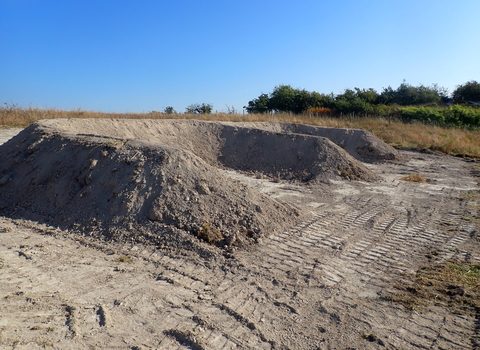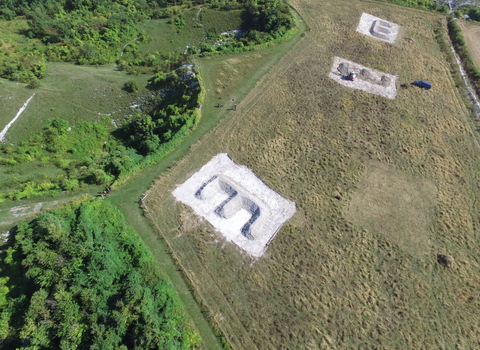Banking on Butterflies began two years ago as one of a suite of projects within the The Wildlife Trusts trialling innovative ways to use nature to mitigate and adapt to the effects of climate change. The Nature Based Solutions Fund received a grant from players of People’s Postcode Lottery, which enabled the monitoring and building of four banks on chalk grassland in Bedfordshire at Totternhoe nature reserve and four identical banks at Pegsdon nature reserve. These sites support important populations of not only butterflies but also other insects and specialist plants.
Matt Hayes, PhD student at Cambridge University zoology dept Insect Ecology group and BCN trustee, explains: “When first constructed, the banks were completely bare, built from white, chalk-rich soil, the exposed earth gave them a look resembling a moonscape. However, plants from the surrounding area began to naturally spread back to the banks. This greening process was slow at first, but suddenly, since January 2023, the vegetation on the banks has shot up.
'At Totternhoe Quarry, vegetation now completely covers the banks on all sides and some plants are well over a meter in height. Surveys show that the array of plants is also quite different from the surrounding fields, generating a wider variety of available habitats. Some of the early successional plants such as thistles, which now dominate the banks, may not be traditional favourites. However, they are covered in nectaring butterflies, and this is the first year that large numbers of butterflies have regularly been found using the banks. This appears to be due to the new nectar sources that the plants are providing, offering more feeding options to species than the bare chalk.
'Ongoing research on the butterfly banks is mainly interested in the diversity of temperatures they can produce across their slopes but evidently, they are generating a diversity of vegetation as well. As future climates continue to become more unpredictable, habitat variation in all of its forms will become more and more important, as it will help produce a full array of environments to support as many species as possible. Surveys of the butterfly banks will continue over the coming years, to see what part they could play in making this future a bit brighter.'








